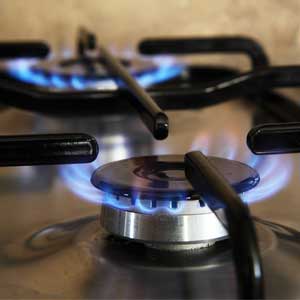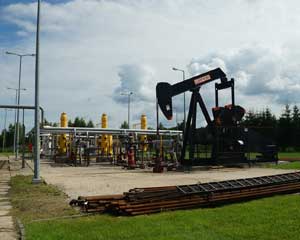Natural Gas Facts
Posted by Admin / in Science Facts

Natural Gas is used to heat food on stove tops
Facts about Natural Gas
- Natural gas is not an element on the periodic table of elements. Instead, it is a mixture of gases found trapped under the earth's surface.
- Natural gas is mostly methane gas. When it is discovered underground, it contains smaller amounts of propane, ethane, and butane gases. Natural gas may also contain helium, nitrogen, hydrogen sulfide, carbon dioxide and water vapor.
- In nature, natural gas can contain up to 7 percent helium.
- Natural gas is a hydrocarbon fuel, so it is a fossil fuel like coal or oil.
- Natural gas is typically found in locations where oil is discovered. New techniques in hydraulic fracturing (fracking) have resulted in large amounts of natural gas that can now be extracted from shale.
- Natural gas is used to heat many homes. It is also used as a heating source for hot water heaters, kitchen stoves and clothes dryers.
- Before being used for many purposes, natural gas is separated. For most uses, like heating homes, the natural gas used is mostly methane.
- Gas companies put mercaptan in Natural gas. Natural gas is odorless. The mercaptan provides a bad smell so people know when there is a gas leak to avoid explosions.
- There are millions of cars and buses around the world that are powered by natural gas.
- When natural gas is burned, it releases water vapor and carbon dioxide.
- Natural gas burns very efficiently and with much less air pollutants than coal or gasoline.
- Natural gas can be burned at temperatures as high as 1950°C.
- Natural gas is not available everywhere. To move natural gas to other locations underground or above ground pipelines need to be installed. The only other way to safely transport natural gas is by cooling it to –260° F (–162° C).
- At this low temperature, natural gas liquifies. The other benefit of liquifying natural gas is the volume is reduced to nearly 1/600th of the original size. Liquefaction of natural gas is still a more expensive transportation method than using pipelines.
- Propane, used to heat homes and power outdoor gas BBQ grills, is a by-product of natural gas processing.
- Ethane, which is one of the gases found in natural gas, is used to make plastic.
- Natural gas is used to make the ammonia used in fertilizer. Natural gas is used as the hydrogen source with nitrogen to make ammonia.
- The Portland cement industry sometimes uses natural gas to heat their kilns to make cement. Cement is used to make concrete and other building products.
- Scientists have developed methods to convert natural gas to other fossil fuels such as gasoline, diesel fuel and jet engine fuel.
- Scientists are studying ways to reduce the use of coal and replace it with natural gas in the steelmaking process.
- The Rainforest Cafe in Disney Springs in Orlando, Florida has a volcano that erupts regularly using natural gas to supply the fire.

Natural gas is found throughout the world where oil is drilled underground.
